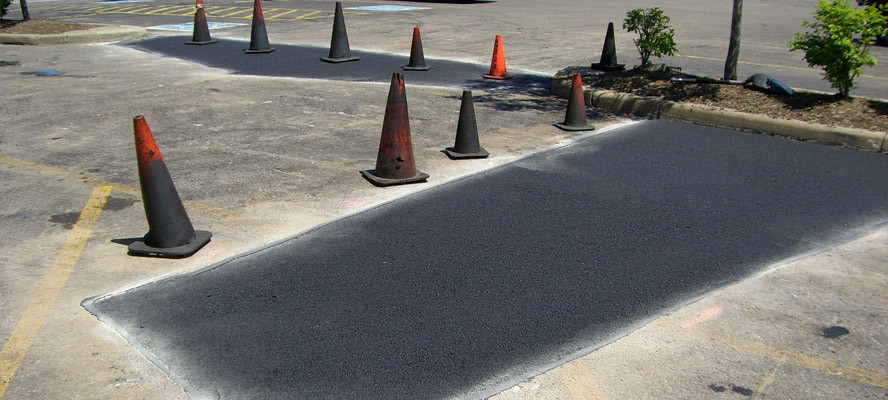The Work of Patching
Patching is a process where you fill potholes in asphalt pavement, repair potholes in playgrounds, roads, tennis courts, and parking lots. This helps avoid huge expenses and prevents further deterioration of pavements. Various materials can be used in asphalt, for instance, hot mix asphalt.
Other materials like the proprietary patch mix with special blends of binders, aggregate and modified binders, stockpile mixes, and asphalt emulsion mixes. Depending on the extent of the damage you want to repair, Commonwealth paving will on which technique and material would be suitable to use.
Various types can be used to repair and fill potholes on roads and pavements. Full-depth or deep patching is considered a permanent repair, while the throw-and-go repair is temporary. Though full-depth and deep can be used interchangeably, there is a slight notable difference between them.
Deep patching involves removing four inches or more of the pavement surface course. In contrast, a full-depth patch involves removing the whole pavement surface layer over the patching area, regardless of the thickness. Therefore, their difference comes in the thickness of pavement surface each removes; one requires a thickness of 4 and above while the other has no specificity when it comes to thickness. Additionally, deep patching is only applied on asphalt surfaces, while full depth can be applied on concrete pavements other than asphalt pavements.
In full-depth patching, the area’s material is removed up to a depth that can provide firm support for the pavement or road. A patch made by this method may require additional drainage. Some conditions are to be met in this method; excavation should extend at least one foot towards the good pavement.
The patches should have square edges and have rectangular cuts without variations in length and width. There should also be proper compaction of the patch using tools like the vibratory plate compactor. Other methods include surface, spray injection, cold-weather emergency, and infrared heater.
Surface patching is a temporary solution to your pothole problem. A portion of the pavement is milled to a depth that removes all the deteriorated material. In spray injection, this technique is particularly used during the cold or wet season. Here, semi-permanent repairs are done on small pavement defects.
This technique starts by using compressed air to clean out water, dirt, and debris from the pothole or crack. An infrared heater is faster and cheaper than full-depth. It also requires less labor than full-depth. These truck-mounted heaters heat the asphalt to a depth of about 2 to 3 inches.
After working on the patch, it is compacted. The cold weather emergency patching is a temporary technique. Throw-and-roll and throw-and-go are examples of this technique, which differ from each other because there is no compaction in throw-and-go; it is done by normal traffic.
Several asphalt patching techniques may be used for filling cracks, pothole repairs in roads, pavements, parking lots, playgrounds, tennis courts, etc. When done the right way, This helps prevent further deterioration and avoid huge repair expenses.
Materials used may range from hot mix asphalt to asphalt emulsion mixes, and proprietary patching mixes with special blends. Your local paving contractor will determine the proper asphalt technique and material based on the extent of damage to be repaired.
Commonly-used asphalt repair methods:
Throw-and-roll: This is a temporary patching technique in which liquid asphalt is filled into a hole and then rolled over. It is typically done in winter or adverse weather conditions when a “quick fix” or emergency patch is required. It may be applied in layers and starts to solidify as it reacts with air.
Semi-permanent patches: A longer-lasting solution; this method requires proper surface preparation. Water and debris are first removed with the help of a broom or air compressor, after which the area is to be patched cut back with a hand tool or power equipment. The prepared hole is then filled with the patching mix and compacted with a roller.
Full-depth: Considered a permanent repair method, this technique involves excavating the patching area to the depth of 4 inches or more and extending at least one foot into the surrounding area to provide firmer support. A tack coat is applied before the asphalt mix, followed by a backfill for proper bonding.
for more detail please contact us. We are here to help you.


